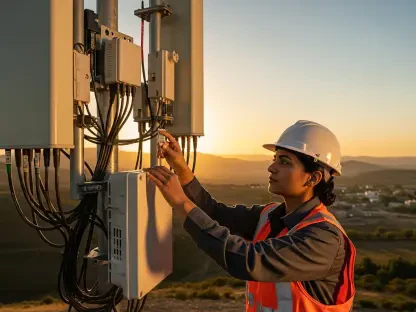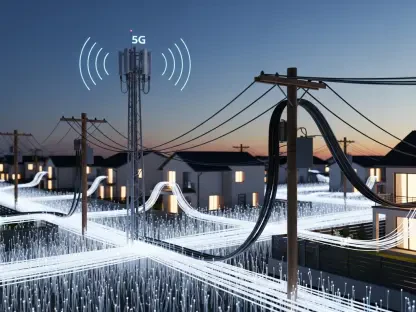The rapid evolution of technology has consistently pushed the boundaries of connectivity, leading to innovations that enhance the way devices interact with one another and with their users. In this landscape, Wifi 8 emerges not merely as a tool for faster internet but as a revolutionary standard aimed at transforming the digital experience, particularly in areas such as augmented reality (AR), artificial intelligence (AI), and robotics. Klaus Doppler, head of Wifi research and standardization at Nokia, sheds light on this breakthrough, explaining that Wifi 8 is poised to redefine wireless local area networks (LAN) by addressing not only speed concerns but also issues of reliability, latency reduction, and intelligent device coordination. Built upon the IEEE 802.11bn standard, Wifi 8 projects a 25% improvement over Wifi 7, enhancing throughput, latency, and efficiency thereby laying the groundwork for a future where digital connectivity is exceedingly responsive and dependable.
Enhancing Connectivity in High-Demand Applications
Wifi 8 promises substantial impacts across sectors that demand exceedingly low-latency and high-reliability networks to function optimally. Augmented reality applications, requiring real-time data exchange to project virtual elements onto a user’s real-world environment, benefit greatly from Wifi 8’s capabilities. With its reduced latency and improved network reliability, AR can facilitate smoother and more immersive experiences. Likewise, artificial intelligence applications, demanding swift processing and reaction times, stand to gain from Wifi 8’s capacity to minimize delays and support complex computations. Not to be excluded are robotics, which rely heavily on real-time control signals, as they will benefit from increased responsiveness and precision, translating into safer and more efficient operations.
Wifi 8 introduces several groundbreaking innovations aimed at tackling the worst-case delay scenarios typically seen in congested environments where unlicensed spectrums coexist with Bluetooth and older wifi networks. This innovation is critical for latency-sensitive applications such as AR and VR, which are significantly disrupted by network unpredictability. By facilitating seamless transitions from congested primary channels to alternative channels, Wifi 8 ensures uninterrupted, efficient spectrum usage, thus minimizing communication delays. Multi-AP Coordination (MAPC), a standout feature, enables multiple access points to collaboratively manage spectrum usage, reducing interference and maximizing network efficiency. These improvements not only enhance individual user experiences but also pave the way for smarter spectrum management in densely populated environments.
Overcoming Compatibility Challenges
As exciting as the prospects of Wifi 8 are, real-world deployment faces several hurdles that must be overcome to achieve widespread adoption. One of the most pressing concerns is compatibility with legacy devices, especially given the billions of Wifi devices currently operating on older standards like Wifi 4 to Wifi 6. This compatibility is crucial as it ensures Wifi 8 can be seamlessly integrated into existing infrastructure without compromising performance. Additionally, testing advanced features such as MAPC, which involves coordinated operations among multiple access points, presents new challenges in interoperability testing. These complexities necessitate a concerted push from device manufacturers to develop hardware compliant with the new standards, ensuring that the transition to Wifi 8 enhances capabilities rather than causing disruption.
The roadmap to Wifi 8 deployment is an elaborate process involving countless stakeholders and meticulous planning. With the initial draft of standards anticipated to be completed soon, the technology is on track for validation and refinement. The IEEE 802.11bn task group, originating from the Ultra-High-Reliability study group, plays a crucial role in this standardization process. Industry engagement is evident from over 6,000 contributions aiding this effort, demonstrating wide-scale commitment to the future of Wifi. The involvement of chipmakers, device vendors, and service providers is indispensable for Wifi’s global success, highlighting the importance of collective collaboration in overcoming compatibility challenges and facilitating seamless integration across diverse technologies.
Laying the Foundation for Future Innovations
Wifi 8 is set to revolutionize sectors that rely on ultra-low latency and high reliability. It’s a game-changer for augmented reality applications, which need real-time data to superimpose virtual elements on the real world, significantly enhancing user experiences with smoother and more immersive interactions. Artificial intelligence, which demands quick processing and response times, will also benefit from Wifi 8’s ability to reduce delays and support complex computations. In the realm of robotics, which heavily depend on real-time control signals, Wifi 8 will deliver increased responsiveness and precision, leading to safer and more efficient operations.
Among its groundbreaking features, Wifi 8 addresses worst-case delay scenarios often encountered in congested spaces where unlicensed spectrums coexist with Bluetooth and older Wifi versions. This is vital for latency-sensitive applications like AR and VR, often hampered by network inconsistencies. By enabling seamless channel transitions, Wifi 8 ensures continuous and efficient spectrum usage. Multi-AP Coordination (MAPC) further enhances this by allowing multiple access points to work together, reducing interference and maximizing network performance, thus improving user experiences and ensuring smarter spectrum management in crowded areas.









